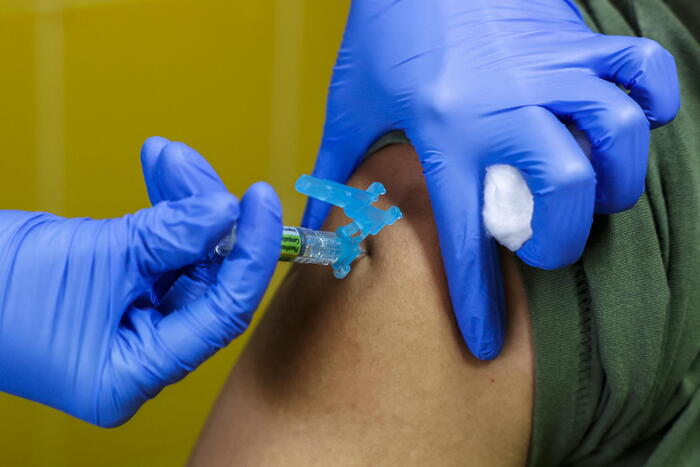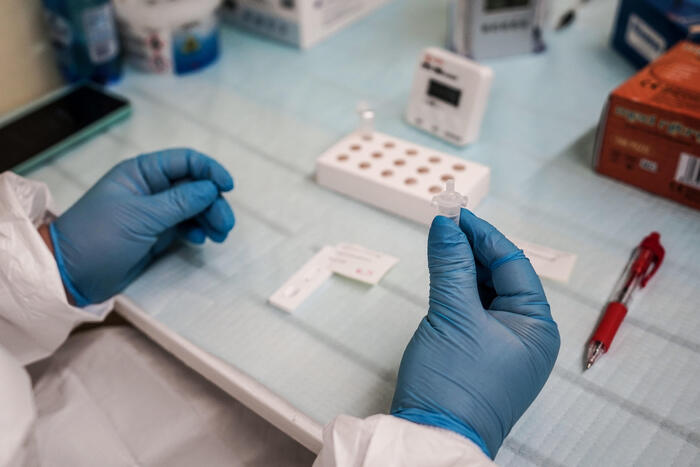The resuscitation capacities of hospital services are constantly questioning.
The layman wonders how an occupancy rate can exceed 100%;
experts wonder why they took as a benchmark a number of beds dating from before the crisis.
And the authorities themselves sometimes put all “critical care” in one bag.
We present here the number of beds available in intensive care to date, in all French hospitals.
At stake: measuring the real pressure of Covid-19 on hospital services, the effort made since 2019 and to be continued to reach 10,000 beds, a target set by the President of the Republic in his last speech, the March, 31st.
How many Covid patients in intensive care are there?
As of April 2, 5,254 patients diagnosed with Covid-19 were hospitalized in “critical care” in France.
Contrary to what is sometimes put forward, not all are "in intensive care" and some are in "intensive care" or "continuous surveillance".
Public Health France has also recently changed the wording in its epidemiological points.
Until the beginning of the year, she spoke of patients "in intensive care".
“We said
intensive care hospitalization,
but it was a bit out of language abuse.
This has always been
critical care
, so we can compare what we gave before with the resuscitation label to what we give today with the critical care label, ”replied the health agency.
So what are the differences between resuscitation and other critical care?
It all depends on the level of severity of the patient's condition.
"Everyone needs to receive oxygen, but an intensive care unit allows much more resources to be put in and, if necessary, to intubate patients," explains Stéphane Gaudry, professor of intensive care intensive care at Avicenne hospital ( Bobigny).
READ ALSO>
"The impression of returning to square one": at the heart of the intensive care unit of the Pompidou hospital
Since mid-March, Public Health France unveils every week, in its weekly report, the precise number of patients "in intensive care" among all those in critical care - this data is not updated daily in open data.
As of March 30, this share was 3,827 out of 5,090 patients treated in these services in France.
This means that 1263 of them were in intensive care or under continuous surveillance.
At the regional level, the proportion of patients in intensive care among all those in critical care is not public and easily found.
It sometimes appears in regional epidemiological points.
In Ile-de-France, for example, 1,033 patients are treated in intensive care and 499 in intensive care or continuous surveillance.
Morning essentials newsletter
A tour of the news to start the day
Subscribe to the newsletterAll newsletters
The confusion remains however ... in the mouths of members of the government or on certain official sites.
"With more than 5,000 Covid patients hospitalized in intensive care, the peak of the second wave is already exceeded," said Jean Castex during his speech to the National Assembly on Thursday morning.
The government site displays the same name of "patients in intensive care".
Which therefore constitutes a misleading shortcut.
What are the reception capacities in intensive care?
According to the latest figures sent to the Parisian by the General Directorate for the provision of care (DGOS), on March 30, 7,906 intensive care beds are currently "armed".
This is nearly 2,500 more than in normal times (5,433 before the crisis, according to figures from the DREES. This 45% increase proves that an effort has been made to deal with the Covid crisis. 19. In the first wave, this number had even greatly exceeded 10,000.
The regions that are currently the most equipped are Ile-de-France (1,862 beds), Hauts-de-France (968) and Provence-Alpes-Côte d'Azur (798).
Compared to the figures of the Drees for 2019, the increase exceeds 100% in Hauts-de-France and 60% in PACA.
Nationally, just over 7,000 of these beds are occupied, the small majority (around 3,800, as we have seen) by patients with Covid.
This means that 90% of the available resuscitation beds are currently occupied.
The gap of up to 100% acts as a sort of “mattress” in order to be able to take care of road accident victims at any time, for example.
Moreover, "before the health crisis, the average occupancy rate of an intensive care unit was already on average 90%", indicates the DGOS.
But "this intensive care occupancy rate, due to the extension of capacities and the number of beds, confirms a level markedly higher than the level outside the crisis", she adds.
What is the “Covid intensive care occupancy rate”?
This indicator is one of those used to monitor the Covid-19 epidemic.
But contrary to what its title might suggest, it is not calculated by relating the number of Covid patients hospitalized in intensive care to the number of beds available in intensive care, which would be around 50%.
As we explained in October, this is actually the number of patients in critical care compared to the capacity in resuscitation-only beds before the crisis.
READ ALSO>
Covid-19: how can we exceed 100% occupancy in intensive care in places?
With just 5,200 Covid-19 patients in critical care in France and 5,080 resuscitation beds in 2019, this therefore gives the occupancy rate a little higher than 100% displayed on official sites.
This ratio varies greatly from region to region, rising to nearly 150% in Hauts-de-France and 140% in the capital region.
What is Emmanuel Macron's goal?
In his speech on Wednesday evening, the Head of State said he wanted "to increase our capacity to just over 10,000 intensive care beds in the coming days".
"To further increase the number of people who can be accommodated in intensive care without too much deprogramming, they are and will be supported in the coming days by additional reinforcements", he assured.
As confirmed to us by the Ministry of Health, the Head of State is talking here about the beds available in intensive care for patients suffering from Covid or treated for another reason.
"The idea is to only have to deprogram operations that do not involve any loss of opportunity for the patient," says one in the entourage of Olivier Véran.
To achieve these 10,000 resuscitation beds (which will not necessarily be reached if the flow of Covid patient admissions no longer increases), we must therefore find more than 2,000 additional.
For this, the government is relying on several levers, including the reallocation of beds, staff, and the use of purchased respirators.
But things are not always that simple in the field.
In his department, Stéphane Gaudry already has 38 intensive care beds, against 16 in normal times.
“If I wanted to have 3 more beds, I would need 5 more nurses,” he says.
According to him, rather than a question of space, "the only problem is the staff".








